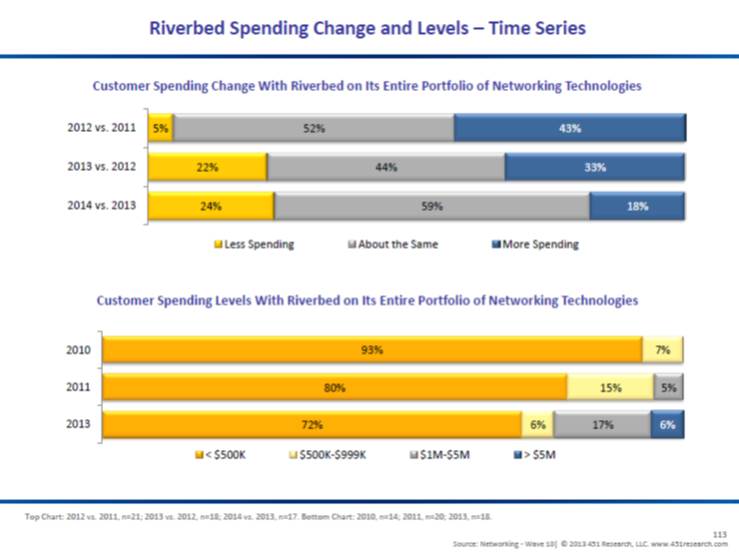Contact: Scott Denne
Elliott Management’s thesis on its proposed $3bn Riverbed buyout is potentially flawed. The activist hedge fund says Riverbed should do more to capitalize on its ‘stable’ position in the WAN market. However, a survey conducted by TheInfoPro, a service of 451 Research, indicates that Riverbed’s WAN business might not be as stable as Elliott would like.
When asked last year about plans for spending on Riverbed products and services (about three-quarters of which is generated by WAN offerings), 24% of Riverbed customers said they would spend less in 2014, compared with 18% who said they would spend more. That’s a particularly negative outlook considering only 5% of survey respondents said they would decrease spending on WAN services overall in 2014.
Another worrisome sign: 4% of Riverbed’s customers said they would consider replacing Riverbed with a competing product, while a year earlier the same percentage told us they ‘might’ consider such a move.
The survey is starting to show truth: revenue growth for Riverbed’s WAN products is already slowing. The WAN business saw 4% YOY growth last quarter, down from 6% growth in the previous quarter.
For more real-time information on tech M&A, follow us on Twitter @451TechMnA

